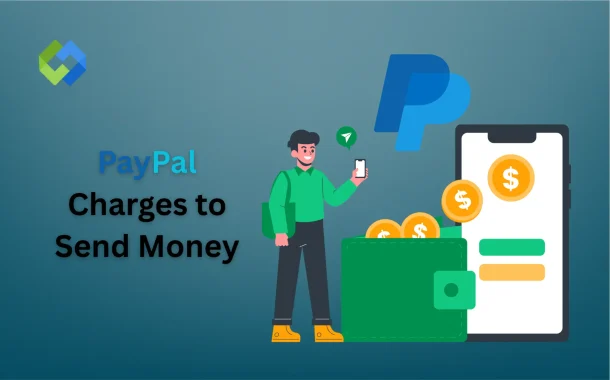This article explains PayPal’s sending fees in simple words. You’ll learn the difference between local and international transfers. It also covers personal and business payments. We’ll break down how much PayPal charges when using a card or balance. You’ll also find tips to save money and avoid fees.
Table of Contents
Table of Contents
Fees for Sending Money Within the Same Country
Sending money within the same country using PayPal can be either free or come with a fee, depending on how you fund the transaction. If you use your PayPal balance or a linked bank account, there is usually no fee for personal transfers. This applies when you send money to friends or family using the “Friends and Family” option. This is the cheapest and most straightforward method for sending money locally.
However, if you choose to use a debit or credit card, PayPal charges a fee. The standard fee for card payments is 2.9% of the total amount you send, plus a fixed fee that depends on the currency. For example, the fixed fee for U.S. dollars is $0.30 per transaction. So, if you send $100 using a credit card, you will pay around $3.20 in fees.
If you’re sending money for goods or services, even locally, PayPal charges a fee. This fee is typically 2.9% plus a fixed fee. The difference is that when sending money for goods or services, PayPal provides buyer and seller protection, which could be useful for transactions involving purchases.
Fees for Sending Money Internationally
When sending money internationally through PayPal, the fees can be higher than domestic transfers. PayPal charges a percentage of the total amount you’re sending, and the fee depends on the destination country and the funding method. For international transfers, PayPal typically charges a fee of 5% on the transaction amount, with a maximum fee of $4.99. This percentage may vary depending on the specific country you’re sending money to.
In addition to the transaction fee, PayPal also applies a currency conversion fee if you’re sending money in a different currency. This fee is usually around 3% to 4% above the exchange rate. For example, if you’re sending money from the U.S. to a country that uses a different currency, PayPal will convert the funds at a slightly lower rate than the market exchange rate, adding this extra cost.
To help reduce these fees, it’s essential to choose the right payment method. Using a PayPal balance or linked bank account for international transfers is often cheaper than using a credit or debit card. If you’re sending a large amount of money, the costs can quickly add up, so it’s worth considering other options if the fees are too high.
PayPal Fees for Business Transactions
When using PayPal for business transactions, fees are applied differently than personal payments. If you receive payments for goods or services, PayPal charges a standard fee of 2.9% plus a fixed fee based on the currency. For example, if you receive $100 for a product or service, the fee will be around $3.20. This fee applies to both domestic and international payments, although the international transactions may include additional charges.
For international business payments, PayPal charges an extra 1.5% fee on top of the standard rate. This means if you receive $100 from another country, the fee could be 4.4% of the transaction amount, plus a fixed fee based on the currency. Currency conversion fees may also apply if the transaction involves different currencies, typically around 3% to 4% above the exchange rate.
Businesses can also take advantage of PayPal’s micropayments rate, which is available for transactions under $10. For micropayments, the fee is 5% plus a fixed fee. This rate is designed to help businesses that deal with small transactions and want to reduce the cost of PayPal fees. Always check the fee structure and consider alternative payment methods if PayPal’s fees are too high for your business model.
Ways to Avoid or Reduce PayPal Fees
1. Use PayPal Balance or Linked Bank Account
One of the best ways to avoid PayPal fees is to use your PayPal balance or a linked bank account. Sending money with these methods is often free, especially for personal payments. Avoid using debit or credit cards as they come with an additional 2.9% fee.
2. Send Money as “Friends and Family”
For international transfers, sending money through the “Friends and Family” option instead of for goods or services can help you avoid standard PayPal fees. However, this method doesn’t offer buyer protection, so it should be used for personal payments only.
3. Take Advantage of Micropayment Fee Structure
If you’re a business dealing with small transactions, PayPal’s micropayment fee structure can reduce costs. This plan charges a lower percentage for transactions under $10, which is ideal for businesses with low-cost sales.
4. Avoid Currency Conversion Fees
To avoid the additional conversion fee, which is typically 3% to 4% above the market exchange rate, try to send money in the recipient’s local currency. You can also ask the recipient to use PayPal in the same currency to prevent extra costs.
5. Stay Updated on PayPal Fee Changes
Regularly checking PayPal’s fee updates and keeping an eye out for special offers or discounts can help you reduce transaction costs. Being aware of any fee reductions or changes can give you the opportunity to save money in the long run.
Conclusion
PayPal fees are important for anyone who uses the platform to send or receive money. Depending on how you send money, whether it’s through a PayPal balance, bank account, or credit card. Domestic transfers can be cheaper, especially if you use your balance, while international transfers usually involve higher fees, including currency conversion costs.
To avoid or reduce these fees, using the right payment methods and being aware of the different options PayPal offers is helpful. By staying informed, you can save money and make smarter choices when using PayPal for transactions.














